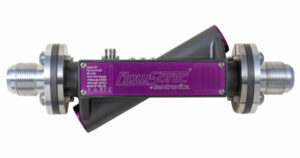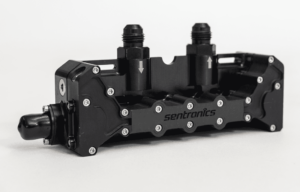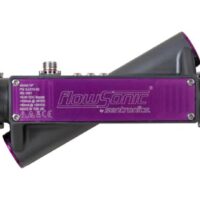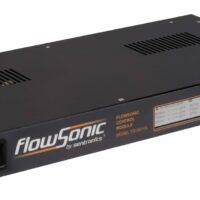Flow Monitoring
Flow sensors use a variety of methods to measure the velocity of a liquid or gas moving through them, which can in turn be used to calculate the mass or volume of the substance of interest moving through the system. Flow measurement sensors are used to monitor a range of substances, including fuel, coolant, oil, lubricant and air.
Fuel Flow Meters

High Flow Ultrasonic Fluid Flow Sensor by Sentronics
Fuel flow meters may be found in military vehicles, vessels and aircraft for the purpose of measuring the efficiency of the engine, or to provide a more accurate value for fuel consumption. Liquid flow meters may also be used to optimize the delivery of oil or coolant to engines or weapons systems. Submarines may also need to monitor the flow of saltwater in and out of the vessel’s tanks in order to ensure quick and efficient diving and surfacing.
Fluid and liquid flow sensors for military and aerospace applications will typically need to be designed with a rugged construction to withstand harsh environments. This design process may include compliance with military standards for shock, vibration, high temperatures, and electromagnetic interference and compatibility (EMI/EMC).
Flow Measurement Technologies

FlowSonic Ultrasonic Flow Meter by Sentronics
Differential pressure flow sensors measure the pressure of the fluid at two points with varying velocities, with the difference in velocity being caused by a nozzle that narrows the diameter of the flow path. The difference in fluid pressure can then be used to calculate a value for the velocity.
Thermal mass flow sensors use the thermal properties of the fluid to calculate the velocity, using a heating element and a thermal sensing element to measure energy absorbed by the fluid. This energy absorption is directly related to the velocity.
Ultrasonic flow sensors use transducers to generate pulses of ultrasound, utilizing time-of-flight measurement in the forward and reverse directions to calculate the fluid velocity. Modern ultrasonic flow meters are highly accurate even in dynamic conditions, and can measure velocity non-invasively while requiring minimal moving parts.
















